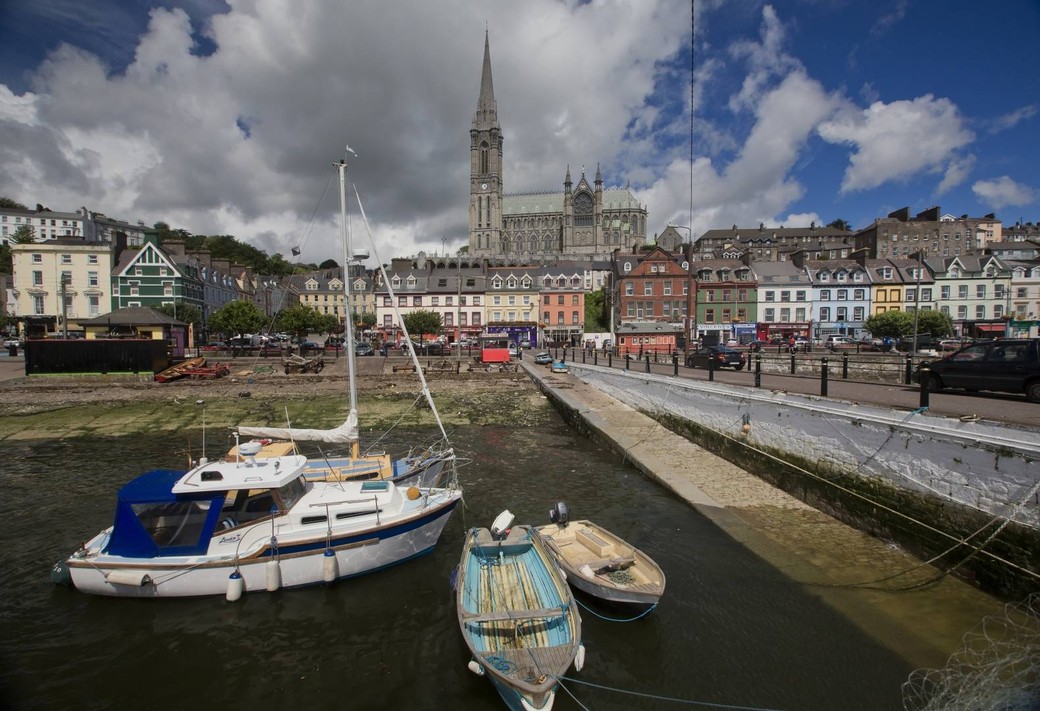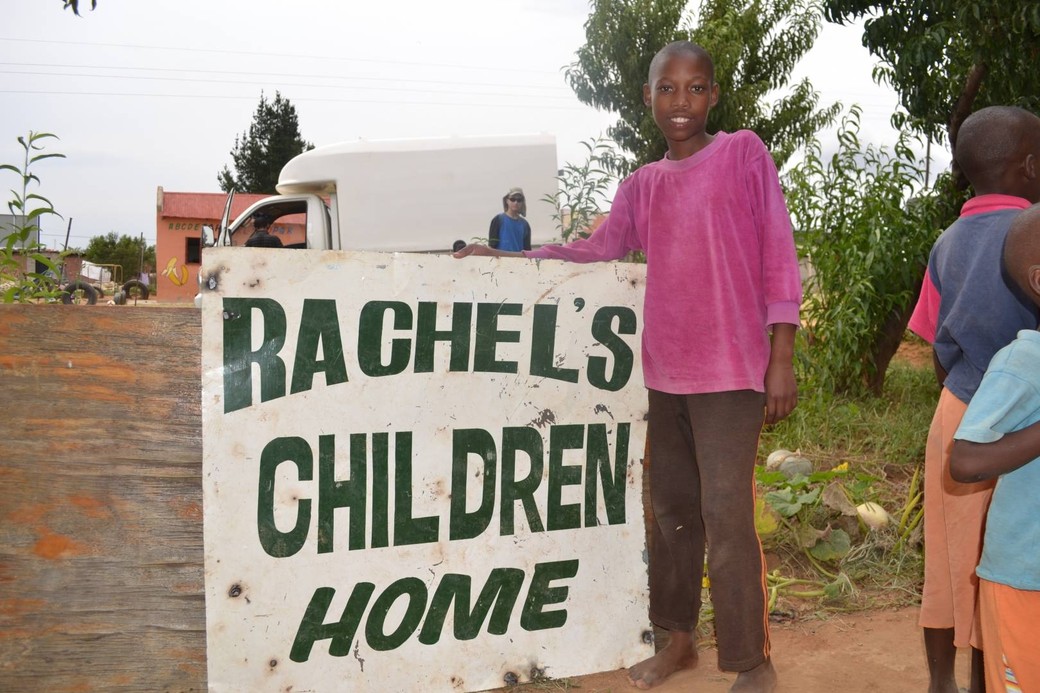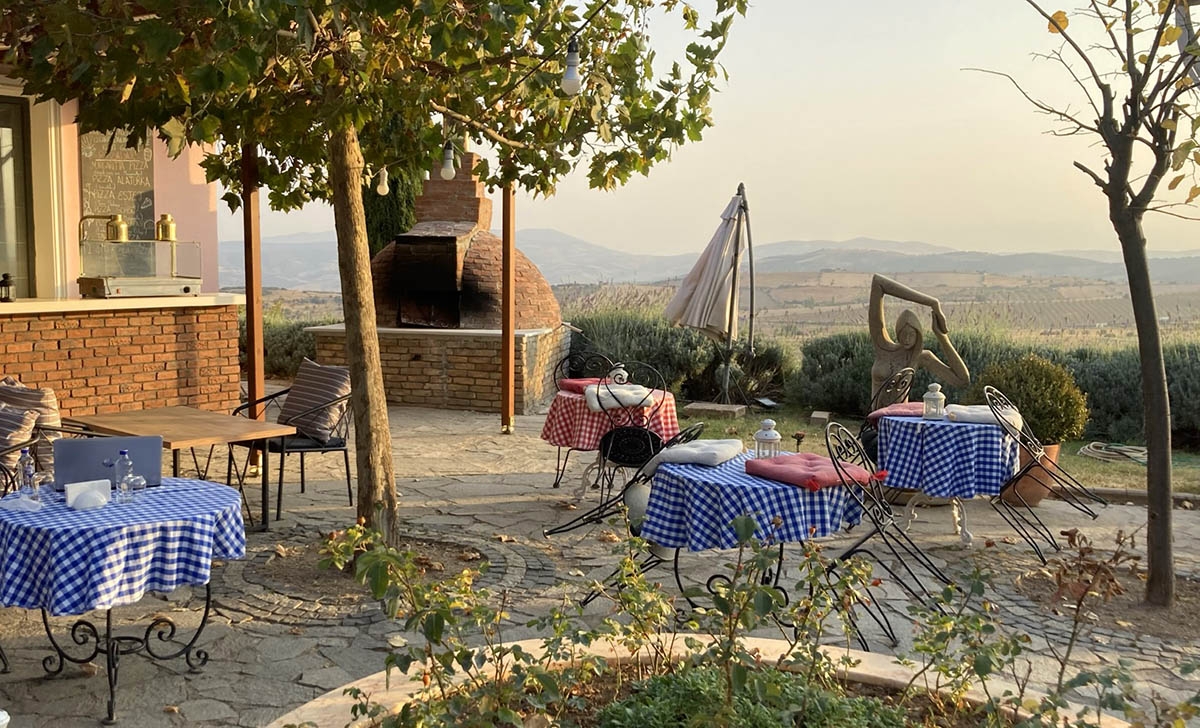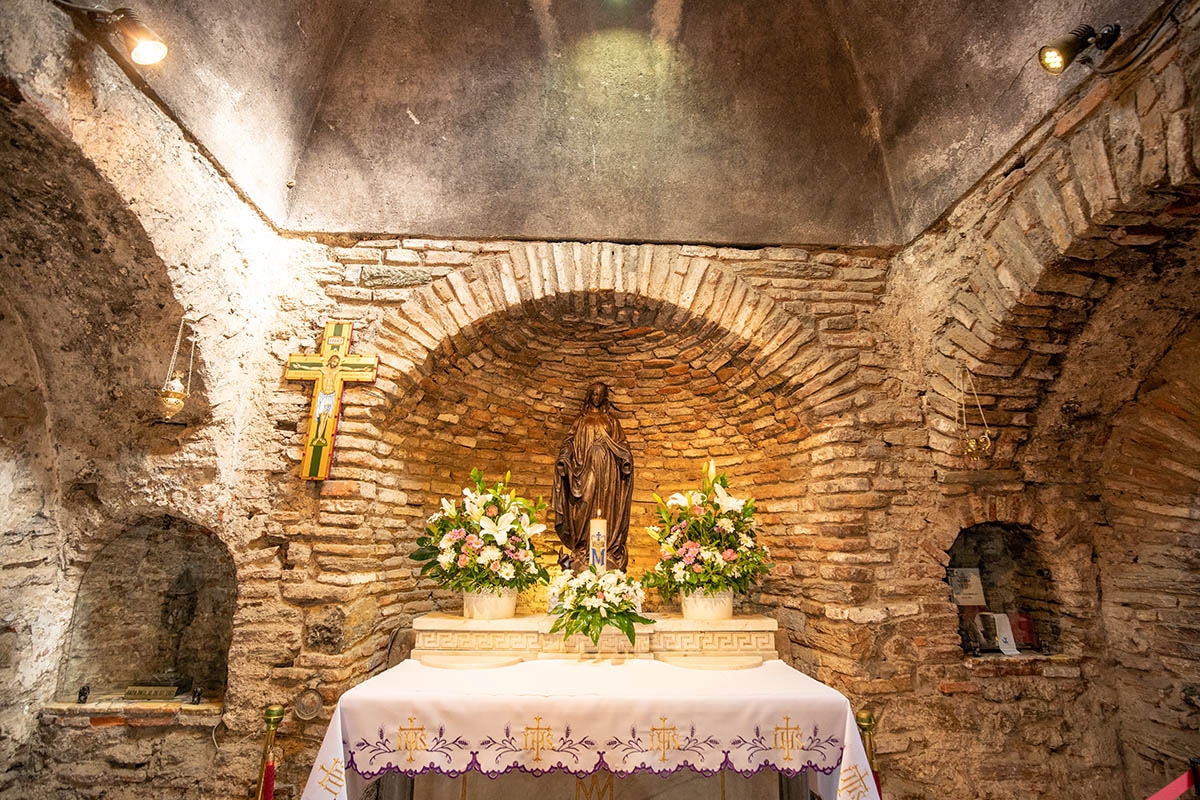
Céad Mile Fáilte: A Hundred Thousand Welcomes
I’m of Irish descent, and like millions of other Irish Canadians, the pull towards visiting my ancestral homeland has always been strong. My great-great-grandparents came to Canada from Waterford in County Cork in the mid-18th century at the height of the potato famine, and my Irish heritage has held a strong presence in my life. The opportunity to visit last December with my son did not disappoint. Ireland is glorious in December. Cool days and colder nights, but still green and charming. I noticed a sign upon arrival in Dublin that said Céad Mile Fáilte or A hundred thousand welcomes. Hard to explain it, but upon arrival, it felt like home. I rented a car and adjusted to the reality that the Irish, like their British counterparts, all drive on the wrong side of the road. It concentrates the mind and makes you forget your jet lag pretty quickly.
We checked into the historic Shelbourne Dublin, a luxury hotel in Dublin’s city centre, overlooking St. Stephen’s Green, Europe’s grandest garden square. This would serve as our point of departure for the next two days as we began to explore Dublin’s cultural and historic buildings. After a sumptuous breakfast in the hotel’s famous tea room, we began a 6-hour walking tour of the city through its heart, St. Stephen’s Green. Our first stop was The Little Museum of Dublin. This museum tells the story of 20th-century Dublin and features over 5,000 artifacts in a collection that was entirely donated by Dubliners.
It was a perfect start and served to put Ireland in context for us historically, culturally, socially and economically. A highlight of this museum was the exhibit celebrating the career, music and roots of U2. Irish humour flourishes in the place. Take a quote from Bono for example, in explaining the difference between the Irish and Americans. “In the United States, you look at the guy that lives in the mansion on the hill, and you think, you know, one day, if I work really hard, I could live in that mansion. In Ireland, people look up at the guy in the mansion on the hill and go, one day, I’m going to get that bastard.” The Irish are cheeky, and their humour and joie de vie are evident everywhere. Next up was a short walk to Trinity College, the oldest university in Ireland.
Founded in 1592 by Queen Elizabeth 1, the 40-acre site retains some of its ancient seclusion of cobbled squares, gardens and parks. The College is famed for its great treasures, including the Book of Kells, a 9th-century illuminated manuscript, the Books of Durrow and Armagh, and an early Irish harp. These are displayed in the College Treasury and The Long Hall (library) which house over 300,000 books, some dating back to its foundation.
Most of Ireland’s state-funded museums are free and very close to each other. Ireland’s Parliament building, Leinster House, can be toured on weekdays. Next door is the National Library, which features exhibits on W.B. Yeats, James Joyce, Jonathan Swift and other famous Irish writers and poets. The National Gallery, holds the national collection of European and Irish fine art. The Archaeology Museum displays Celtic gold artefacts, including beautiful artistic necklaces called lunulas and torcs. The National Museum of Ireland, is Ireland’s premier cultural institution and home to the greatest collections of Irish material heritage, culture and natural history in the world.
After six hours of touring we decided it was time for a “Guinness Stop” something that would become a regular occurrence on the trip. In Dublin, there are hundreds of bars, pubs and restaurants that serve great beer, whiskey and food. The most renowned is the Temple Bar district. The Temple Bar pub and O’Donoghue’s are among the many great pubs of Dublin that cater to visitors and locals and serve as a musician’s paradise for live performance venues.
We left the Temple Bar district for a stroll on Grafton Street, Dublin’s famous shopping area. Taking in the atmosphere of Christmas lights and the sounds of buskers was truly magical. We had dinner that evening at the Shelbourne Hotel’s Saddle Room Restaurant. This cozy and intimate spot specializes in steak, oysters and seafood and has an exceptional wine list. As we dined, a light, crisp, white, shining snowfall covered the streets. The snow was gone by the time we left the next morning. It was a coo,l brisk sunny day, and we made our towards Kilmainham Gaol, one of the largest unoccupied prisons in Europe
It has been described as the ‘Irish Bastille’. Between the year it opened in 1796 and its closure in 1924, Kilmainham Gaol witnessed some of the key moments and personalities in Ireland’s emergence as an independent nation. It is Ireland’s leading historic monument exploring the theme of nationalism. Robert Emmet and the leaders of the 1916 civil war uprising were executed here. Charles Stewart Parnell, leader of the Irish Parliamentary Party, was imprisoned here in 1881-82. The Gaol museum holds one of the finest collections of nationalist memorabilia in the country, and the exhibition displays some of Irelands most impressive objects, including an original and rare 1916 Proclamation and some items relating to Michael Collins and the circumstances of his death in 1922.
Kilmainham Gaol was one of the highlights of our trip to Ireland. Next up was a stop at The Porterhouse, Ireland’s first brew pub located in the Temple Bar, to drink some genuine Irish Stout. Porterhouse beers have won gold medals at the world’s most prestigious international brewing industry award (the Brewing Oscars) in 1998/1999 and 2011/2012. They make their own stouts and ales for their pubs in Dublin, Cork and other locales in Ireland and they ship to the US beer market. They also import various beers from around the world with a keen eye on Belgium.
Gallagher’s Boxty House was next, in the heart of the Temple Bar. This is a restaurant with a strong connection with the land, culture and history of Ireland. It’s a place where people are invited to embrace the origins of the Boxty Pancake and the history of the potato in Irish cuisine and culture. Owner Padraic Gallagher is one of Ireland’s most renowned and respected experts on the potato and other Irish foods. We sampled the dumplings, corned beef, Irish stew, roasted black pudding and some Irish whiskey.
The next day, we left Dublin and headed south through the rolling Irish countryside towards Cork. We stopped for lunch in the small village of Delgany, Co Wicklow to meet with Patrick Ryan at The Firehouse Bakery. Ryan is a former lawyer turned master baker. His 2011 BBC programme The Big Bread Experiment, a three-part series following a unique social experiment with one ambition — to reunite a community through bread — made him a celebrity with foodies in Britain and around the world. The wood-fired oven is at the heart of everything Ryan does. Hand-crafted loaves, freshly baked pizzas, and slow-cooked meats define this award-winning artisan bakery. Ryan and his partner Laura Moore also operate a bread school in Heir Island in West Cork.
We enjoyed the next three hours driving through the mist and rain of the Irish heartland, arriving in Cork (the name Corcaigh means a marsh) in the early evening. A historic seaport city, Cork began on an island in the swampy estuary of the River Lee and over several centuries expanded up the steep banks on either side. Today, the river flows through Cork City in two main channels, which explains the many crossing bridges throughout the city. We checked into the famous 5-star Hayfield Manor Hotel. The Hayfield Manor is a very welcoming and friendly property located on a hilltop estate overlooking the city. It features large, luxurious, and comfortable rooms with all the amenities, including free wifi, beautiful grounds, a work-out room, a spa and an indoor heated pool. The decor is elegant and tasteful and the newly-built additions complement the older parts of the building. The Manor serves sumptuous Irish breakfasts with a variety of fresh fruit and juices. Fine dining is offered at Orchids Restaurant or you can drop into Perrotts Garden Bistro, a casual meal alternative. Head Chef Stephen Sullivan prepares contemporary Irish cuisine using the freshest ingredients from the land and sea in the Cork region.
The best way to see the city of Cork is to walk. St. Patrick’s Street and the heart of the shopping district and attractions of Cork is a twenty minute walk from Hayfield Manor. Cork offers a wealth of shops, bars, restaurants, and attractions. We spent two days exploring this historic port town whose coat of arms bears the motto ‘A Safe Harbour for Ships’. Corkonians are known as the most chatty of all the Irish. In the heart of the city is the English Market, which is a large, gallery-type building covering an entire city block with a vaulted glass roof. First opened in 1788, the Market has undergone various changes. The market provides vegetables, fresh seafood, dairy, meats, cheeses — everything for the table. After a morning of walking around Cork it was nice to step out of the overcast mist that had engulfed the city and step into The Farmgate Café in the English Market. Committed to food grown in the Munster region, its small menu is dictated by the food stalls in the market, so menu options change daily. Their lamb stew with Guinness and apple strudel hit the mark.
Cork is a foodie’s paradise and there are pubs and restaurants everywhere serving Irish comfort foods, curry, chowders, spiced beef, fish and chips and glorious desserts. Most restaurants stop serving food at 8 p.m. After that, beer, wine, and spirits reign until closing time. Like Dublin, you can find traditional live Irish music in venues throughout the city. Next up was a quick side trip to The Jameson Distillery in Midleton and then a visit to Blarney Castle to take part in the ole Irish tradition of Kissing the Blarney Stone (although I still think it is a tourist thing; it’s fun-sort of like kissing the cod in Newfoundland). Cork is a destination city for beer and cider ,and you can get some of Ireland’s best cider at The Roundy’s home-made hot cider house.
After two and half days in Cork, we once again saw sunshine as we made our way south to Cobh for a guided walking tour along The Titanic Trail and a visit to the Cobh Heritage Centre. Cobh is the port city where the Titanic left on its maiden (and last) voyage. More importantly, this small town was the port from which millions of Irish people left Ireland during the great potato famine to immigrate to North America. The rich history and tragedy of this period is well documented in The Cobh Heritage Centre. Any Canadian of Irish descent visiting Ireland should visit Cobh. I was struck by the presence of The Cathedral of Saint Colman in Cobh — built with money sent back from Irish immigrants to honour the town from which they left. A large and elaborately detailed neo-Gothic building, it prominently overlooks the harbour. The historian Emmet Larkin has called it “The most ambitious building project undertaken by the Church in nineteenth-century Ireland.” It is still imposing today.
The next day we drove to the small port town of Kinsale and checked into The Old Bank Townhouse. Located in the heart of Kinsale, it is within walking distance of everything and directly across the street from the town harbour. It is an amazing heritage building (over 200 years old) that has been renovated but retains its charm. It serves hearty breakfasts with homemade bread (from the bakery downstairs) and jams. We spent an afternoon exploring Kinsale. A popular venue is Fishy Fishy Kinsale, a ‘must do’ stop. This restaurant has won acclaim from foodies in Ireland for its wonderful seafood dishes made from the freshest local catch, from lobster to crab, crayfish to cod, monkfish, squid, john dory and haddock. They serve the best traditional fish & chips you will ever taste in their newly-established Fishy Fishy Chippie. Like many restaurants in Ireland, Fishy Fishy is committed to prioritizing the core indigenous ingredients of Irish cuisine and promoting local and artisan producers.
After a day in Kinsale, we headed back to Dublin and checked in to the modern and stylishly contemporary Fitzwilliam Hotel in St Stephen’s Green, which caters to business and family travellers. After settling in we headed out to learn more about the Gaelic games. In Ireland, Gaelic games, music, dance and language are at the heart of what it is to be Irish. The two main ones are Gaelic Football & Hurling, both of which are organized by the Gaelic Athletic Association (GAA). Other games organized by the GAA include Rounders and Gaelic Handball. During the late 19th century, Gaelic games in Ireland were dying out. This decline was stopped and reversed by the Gaelic Revival group. Today, Gaelic Football and Hurling are the most popular games in Ireland.
Players are boys and girls across all age groups from under eight to under 18, and men and women of all ages. Every weekend, Club matches are played in every town and village of Ireland. The very biggest matches regularly attract attendance of over 40,000 per game. The All-Ireland Finals attract 82,500 every September to an extraordinary stadium in Dublin: Croke Park, based close to the city centre of Dublin. The Gaelic Games are as popular to the Irish as hockey is to Canadians. We headed back to the Fitzwilliam Hotel for dinner at the famous Michelin-starred Thornton’s Restaurant. Head Chef and Proprietor Kevin Thornton is widely regarded as Ireland’s best chef. Thornton’s offers a wonderful, fine dining experience in a beautiful setting. It was a majestic way to spend our last night in Ireland.
If I was to give Ireland an Michelin rating it would certainly be three stars.
How to get there: Air Lingus
How to get around: Hertz Car rental
About Ireland: www.discoverireland.ie , www.ireland.com
About Dublin: www.visitdublin.com









